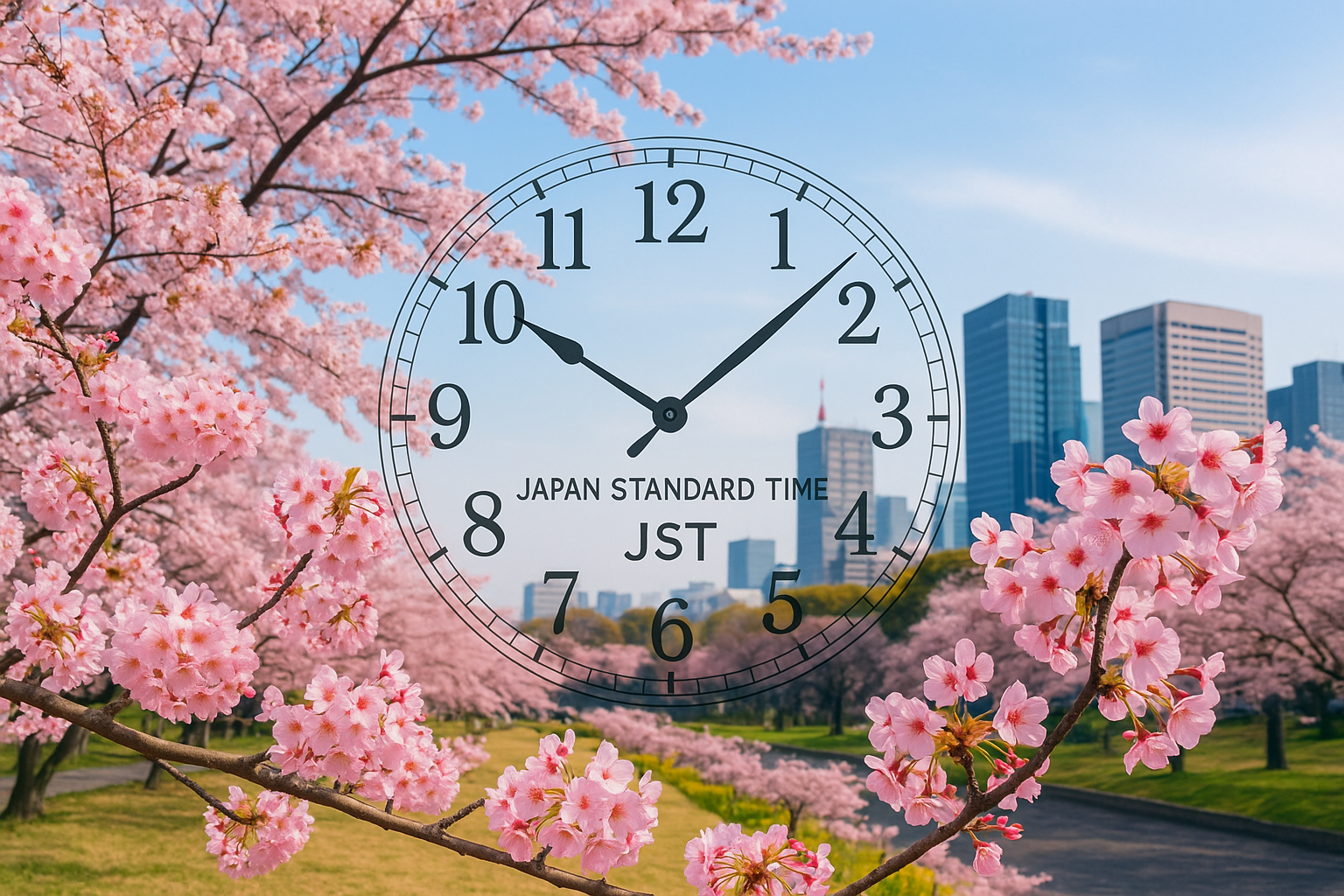- blog.title
- Understanding Time in Japan: Current Clock and Cultural Insights
Understanding Time in Japan: Current Clock and Cultural Insights
Are you planning a trip to Tokyo, coordinating a virtual meeting with colleagues in Osaka, or simply curious about the time in Japan?
Whether you're checking the current time in Japan for practical reasons or deeper cultural understanding, Japan operates on a unique rhythm that blends precision with tradition.
In this guide, we'll explore the essentials of the time in Japan, including how to find the current time in Japan accurately, the Japan Standard Time (JST) system, and fascinating cultural insights that make time more than just numbers on a clock.
By the end, you'll not only know the time in Japan now but also how it influences daily life, festivals, and even business etiquette.
At https://japantime.co/, we provide a live clock for the current time in Japan—bookmark it for instant updates!
What Is the Current Time in Japan?
Let's start with the basics: the current time in Japan is based on Japan Standard Time (JST), which is UTC+9 hours.
Unlike many countries, Japan does not observe Daylight Saving Time (DST), so the time in Japan remains consistent year-round. This means if it's noon in Greenwich Mean Time (UTC), the current time in Japan would be 9:00 PM.
For real-time accuracy, tools like atomic clocks from Japan's National Institute of Information and Communications Technology ensure the time in Japan is precise to the millisecond.
As of this writing (note: times change, so check live!), the current time in Japan is [insert dynamic time embed or placeholder, e.g., 3:45 PM JST].
If you're in the US Eastern Time Zone (EST), subtract 14 hours from your local time to get the time in Japan (or 13 hours during US DST).
For example, if it's 1:00 AM EST, the current time in Japan is 3:00 PM. This stability in the time in Japan is a boon for international travelers—no surprises from clock changes!
Pro tip: Use our free time converter at https://japantime.co/ to compare the current time in Japan with your location instantly. It's perfect for avoiding those awkward late-night calls.
The Role of Time in Japanese Culture
Beyond the clock, the time in Japan carries deep cultural significance. Japan is known for its punctuality—trains like the Shinkansen arrive exactly on schedule, reflecting a societal value called jikan no kanri (time management).
This emphasis on precision influences everything from work culture to social interactions. For instance, being even a minute late to a meeting can be seen as disrespectful, tying back to the reliable current time in Japan system.
Culturally, the time in Japan is intertwined with seasons and festivals. Spring's cherry blossom viewing (hanami) peaks around late March to early April, when the time in Japan aligns with longer days and mild weather. Imagine checking the current time in Japan during Golden Week (late April to early May), a national holiday period when millions travel—knowing the exact time in Japan now helps you navigate crowded spots like Kyoto's temples.

In business, the time in Japan affects global dealings.
With JST being 9 hours ahead of UTC, coordinating with Western partners often means early mornings or late nights. This has shaped Japan's work ethic, where overtime (known as zangyo) is common, but recent reforms are pushing for better work-life balance. Understanding the current time in Japan isn't just practical—it's key to respecting these cultural norms.
How Time in Japan Influences Travel Planning
When planning a trip, the time in Japan plays a pivotal role in choosing the right season. For instance, if you're eyeing the best time to visit Japan, consider how the current time in Japan ties into weather and events.
Spring (March-May) offers mild temperatures and hanami, but book flights early as the time in Japan during this period sees peak tourism.
Summer (June-August) brings humidity and festivals like Tanabata, but typhoons can disrupt schedules—always check the current time in Japan for real-time weather updates.
Autumn (September-November) is ideal for foliage viewing (koyo), with comfortable time in Japan daylight hours for hiking in places like Nikko.
Winter (December-February) features snow in Hokkaido, perfect for skiing, though shorter days mean planning around the time in Japan now for optimal light. Here's a quick seasonal breakdown:
Spring: Best for flowers; avoid Golden Week crowds.
Summer: Festival-heavy but hot; use current time in Japan tools for event timings.
Autumn: Mild and scenic; lower costs.
Winter: Budget-friendly with illuminations.
No matter the season, jet lag from crossing time zones can hit hard—adjust by syncing your watch to the time in Japan upon arrival. For personalized itineraries, visit https://japantime.co/ and use our planner integrated with the current time in Japan.
Fun Facts About Time in Japan
Did you know Japan has no multiple time zones?
The entire country follows uniform JST, from Tokyo to Okinawa, simplifying the current time in Japan for everyone.
Another gem: Japan pioneered quartz watches in the 1960s via Seiko, revolutionizing global timekeeping.
Historically, before Western clocks, Japan used wadokei (variable-hour systems based on sunrise/sunset), showing how the time in Japan has evolved from fluid to fixed. Fun fact—there's no DST because a post-WWII trial in 1948-1951 was unpopular due to energy concerns.
These quirks make checking the time in Japan now a window into innovation.
Common Questions About Current Time in Japan
Drawing from popular searches, here are quick answers: Q: Does Japan have DST? A: No, so the time in Japan stays steady.
Q: What's the time difference from the US? A: Varies; e.g., 14 hours ahead of EST.
Q: How accurate is the current time in Japan? A: Extremely, thanks to atomic standards.
For more FAQs, explore our resources at https://japantime.co/.
Conclusion
Mastering the time in Japan and current time in Japan opens doors to better travel, business, and cultural appreciation.
From JST precision to seasonal festivals, it's all connected.
Check https://japantime.co/ for live updates and tools—subscribe for more insights!
